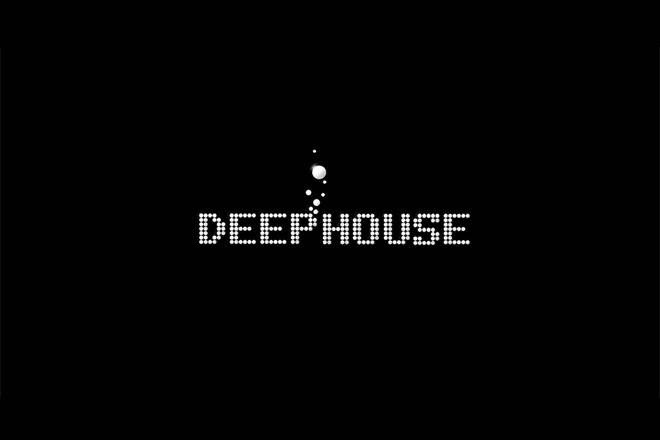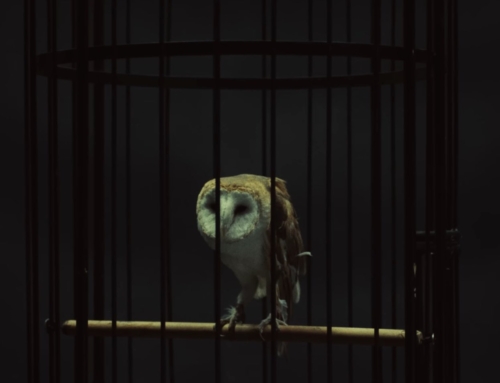Deep house is one of those dance music subgenres that you just don’t touch. Its origins and 30-year history have carved out a firm place in the genre’s pantheon of come-and-go styles, never truly hitting mainstream in the U.S. but outlasting practically any trend. If it’s classic dance music you’re after, referencing it immediately comes to mind. After all, the melodies, minimalist textures, and groove give it a timeless quality that’s equal parts at home in a retro night and a modern DJ’s setlist.
The past year, however, has seen a change in tides. Of course, the tried-and-true DJs and producers are still out there, but the dance music world has acknowledged that it’s on the cusp of going mainstream. In some parts of the world, it already has – with artists touring the U.S. and headlining festivals and Ultra putting out its first deep house compilation.
Of course, there’s always another side, and in deep house’s case, it mirrors the rest of dance music’s history once a genre becomes popular. Pop sounds dominate, and pop music performers are starting to get in on the trend.
So, why deep house and why now?
The Anti-EDM Trend
One pattern we’ve noticed since 2013 is the preponderance of dance music fans that, while not claiming affinity entirely for the underground, opt for something “different.” Case in point: The hoopla surrounding Daft Punk’s Random Access Memories, especially single “Get Lucky,” last year.
The hype over that particular release has since died down, but 2014 saw that fervor, of progressive house being replaced, frankly, by instrumental textures, come on the wave of Disclosure.
Although relative newcomers, Disclosure seem to capitalize on the similar sentiment: A lack of builds and drops characterizes tracks like “Latch” and “White Noise,” as the U.K. duo settles for textures far more pared down and minimal than listeners are used to hearing on a similarly-charting record, like, say, Zedd’s Clarity.
Two, it has the retro factor going for it. But while Daft Punk played up the disco influence, Disclosure aimed for something the mainstream hasn’t heard in a while – and in the case of the U.S., likely never – U.K. Garage sounds. Tracks brought on soulful vocals, while reducing the instrumentation down to glitches and a simple, less emphatic beat.
So with these two records leading, accounts from U.K. radio listeners say that it was only time for deep house performers, like Hot Since 82, Klingande, and Bondax, to finally score hits on the charts – almost akin to U.K. Garage’s similar rise in the late ‘90s.
DJ school Spin Academy described the phenomenon as hearing the Berlin sound on the radio. Although this narrative describes the trend as being “dated,” they note that performers on that side of the pond have essentially latched onto – excuse the pun – Disclosure’s success.
Others have a less positive outlook. For instance, Meoko.net touches on the fact that minimal music is getting its due in reaction to harder styles, particularly mainstream progressive house, electro, and dubstep, but that the version being pushed is “fluff.” Sound familiar?
However, when you look at it from the DJ’s perspective, as this piece from Social Yeti does in interviewing a few NYC club DJs, the popularity – one already taking off in the U.S. – comes from sonic migration, much like many dance music sounds have. Specifically, as DJ Jack Mulqueen describes, what’s being pushed to audiences at Pacha Ibiza and Cavo Paradis is now emerging at New York venues like Story, Marquee, Output, and Verboten.
Nadav Vee, another source interviewed for the piece, agrees, stating that dance music fans from this side of the pond have heard the more sophisticated sounds on Ibiza and then are returning to the States to seek them out.
Mainstream Performers Support It
Remember how when hardstyle was about to break earlier in 2014, a definitive factor was mainstream EDM performers – from Diplo and David Guetta to trance duo W&W – adopting sounds or collaborating with the subgenre’s artists? A similar pattern started to emerge this past year for deep house.
Wunderground.com called it out facetiously, claiming in an Onion-esque editorial that hipsters no longer like deep house and instead prefer minimalist techno. As eye-rolling as this is, there’s more than a shred of truth to it: Particularly that Tiesto, the adopter and diluter of all trends from trance through electro, started doing “afterhours” deep house sets in 2013. He continued to follow that in 2014, with an essential mix and his latest Club Life episode.
As cringe-worthy as Tiesto’s interpretations of underground tracks are (like his “Back to the Acid” over the summer), others are getting on board with the minimal trend. Porter Robinson defied all complextro expectations by putting out a stripped-down release as his first album, in essence doing a move similar to but the reverse of Avicii’s True.
As well, Laidback Luke, who himself did some future house, a sub-subgenre that’s an offshoot of deep house, over the summer, declared on Twitter: “Look at how mainstream deephouse is in the UK right now. I love it, but US elitists brace yourself.”
Who’s Bringing It Over to the U.S.?
Ultra’s Ultra Deep House compilation may as well be a capsule for this particular moment in time – although it’s one that’s fairly forgettable. As label president Patrick Moxey told YourEDM, deep house is the “next big thing”, with artists like Zhu, Tchami, and Klingande scoring hits in the U.K.
If you take a listen to the compilation, much of what’s being pushed mirrors progressive house trends, albeit with stripped down instrumentation and a slower tempo: pop-ish vocals pushed higher in the mix and a major key, optimistic feel. None of it’s particularly complex, and a good deal of it kind of blends together. It’s as if Ultra took the uplifting character of, say, a Swedish House Mafia track, removed the drops and huge synths, and presented it for audiences.
While Ultra’s previous affinity for deep house ended at sticking an Ultra Nate track on a compilation or putting out an afterhours series, the artists at the forefront in North America appear to be Art Department. Although artists like Klingande have done club tours, the U.K. duo known for tracks like “Sun Comes Up” and “Who Is Jake Holmes” have been prominently featured at Ultra Music Festival (a 9 p.m. time spot at the Underground Story stage in 2014) and also performed at BPM and are scheduled for Creamfields Buenos Aires later this year.
As they touch on in the VICE interview linked above, they see themselves at the forefront of what’s akin to a dubstep-like ascent. The question, then, is, will they give deep house a Skrillex-type of interpretation or keep it pure?
In a sense, though, that notion’s partially a mute point, as Puff Daddy jumped on the bandwagon with his Guy Gerber collaborative album. The release, thankfully, isn’t as ear-splitting as Waka Flocka Flame working with Steve Aoki, and the artist born Sean Combs takes a backseat to Gerber’s minimalist, darker production. It’s not in the same league as David Guetta’s Nothing But The Beat or Calvin Harris’ 18 Months for their awful hip-hop collaborations, but it’s also fairly underwhelming. If this is a pop-deep house fusion, then, frankly, the mainstream future of the subgenre seems a bit bleak and dull.




